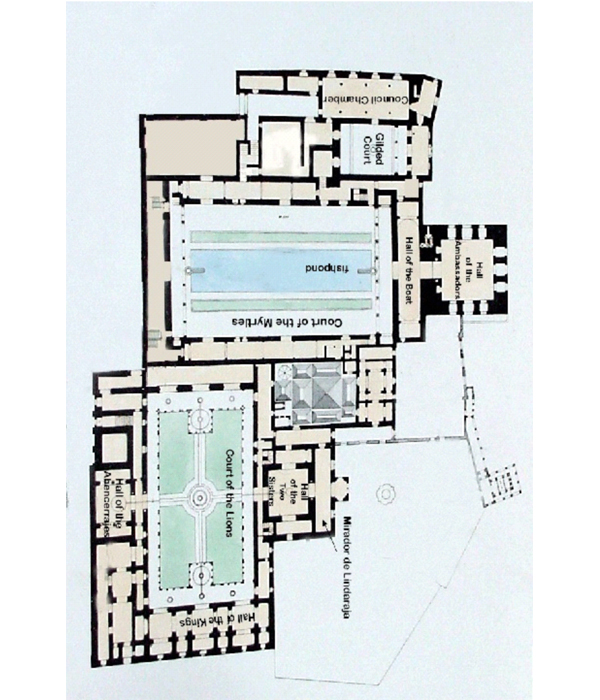The Stone Lions (31 page)
Authors: Gwen Dandridge
Tags: #history, #fantasy, #islam, #math, #geometry, #symmetry, #andalusia, #alhambra

Abd al-Rahmid, Wazir
Ara, a girl of the harem. Daughter of the sultan
Dananir, fourth wife of the sultan
Enrique, son of the Lady Theresa
Fatima, Zoriah’s grandmother. One of the women living
in the harem
Hasan, a young boy who lives in the harem
Lady Anna, visiting woman from the north of Spain
Lady Catalina, visiting woman from the north of
Spain
Lady Theresa, visiting woman from the north of
Spain
Layla, Ara’s cousin
Maryam, Layla’s mother
Rabab, Ara’s Great Aunt, who also lives in the
harem
Sara, young girl in the harem
Sister Helena, nun from the north of Spain
Sister Mary, nun from the north of Spain
Su’ah, a Saracen slave
Suleiman, a palace slave who has risen to the job of
harem tutor
Sultan, Muhammad VII, father of Ara
Tahirah, famous Sufi mathemagician
Thana, second wife of the sultan’s brother, Abn
al-Humam
Zoriah, head wife of the sultan
Loyalty
Vigilance
Justice
Wisdom
Endurance
Reason
Strength
Prudence
Discipline
Courage
Patience
Curiosity
Band symmetry: seven symmetries that form a one-dimensional pattern
(a row or band) and seventeen wallpaper symmetries
(two-dimensional) have been used in art and architecture for almost
as long as people have created art and architecture.
Recently, three-dimensional symmetry was discovered
to be important in many areas of science; in particular,
crystallography and particle science. This book is an introduction
to band symmetry (one-dimensional symmetry).
There are seven possible band
symmetries
1.Vertical Reflection

A symmetry family with a vertical reflection. There
is no rotation and no horizontal reflection. Bilateral Symmetry is
included in this group. Two of the vertical lines are shown here
with arrows.
2. Horizontal
Reflection

A symmetry family with a horizontal reflection. There
is no rotation and no vertical reflection. The single horizontal
line is shown above.
3. Double reflection

A symmetry family that has two reflections, one over
a horizontal line and over a vertical line. It does rotate and it
looks the same upside down as right side up. The single horizontal
line plus two of many possible vertical lines of reflection are
shown above.
4. Translation

An asymmetrical shape with no reflection and no
rotation. It moves by translation or sliding. No vertical or
horizontal lines are possible.
5. Rotation

An asymmetrical object that rotates around a point.
There is no reflection. Three of the points of rotation are shown
above with dots.
6. Glide reflection

An asymmetric object with a glide. No vertical
mirror, does not rotate. The object glides (the triangle shows the
first glide) and then reflects. The horizontal line is shown as a
single glide.
7. Glide with a vertical
mirror

A symmetric object (the vertical mirror) that glides.
It also can be seen to rotate. The object reflects, creating the
double triangle, then it glides (as shown by the double triangle)
and then it reflects. The horizontal line is shown. This symmetry
can also rotate. Two of the points of rotation are shown with
dots.
And Four Motions
Reflection (mirror or flip), the image flips over a
horizontal or vertical line
Rotation, the image turns around a fixed point
Translation (Slide), the image moves along the row
one space
Glide reflection, the image moves along the row one
space and then flips over a horizontal line



